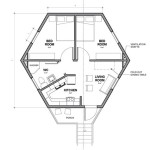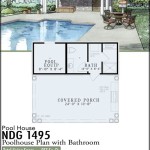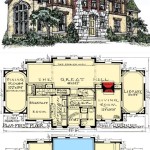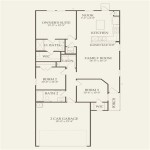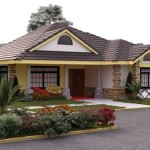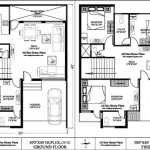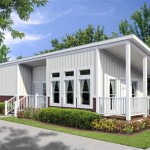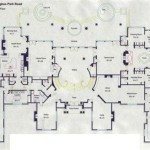Garden Shed Plans: Embracing the Cottage Aesthetic
The pursuit of a charming and functional outdoor space often leads to the consideration of a garden shed. A garden shed provides essential storage for tools, equipment, and potting supplies, while also contributing to the overall aesthetic of the garden. When selecting garden shed plans, the cottage style presents a particularly attractive option, offering a blend of practicality and visual appeal that complements a variety of garden settings.
Cottage-style garden sheds are typically characterized by their quaint and rustic design elements. These elements can include steeply pitched roofs, dormer windows, decorative trim, and natural materials, all of which contribute to a charming and inviting atmosphere. Selecting the right garden shed plans is crucial to achieving the desired cottage aesthetic and ensuring the shed meets specific storage needs.
The design and construction of a cottage garden shed requires careful planning and attention to detail. From choosing the appropriate materials to accurately interpreting the plans, each step plays a vital role in achieving a successful outcome. This detailed analysis will explore key considerations for selecting and implementing garden shed plans focused on the cottage aesthetic.
Key Point 1: Design Elements of Cottage Garden Shed Plans
Cottage garden sheds are not simply functional storage spaces; they are designed to evoke a sense of warmth, charm, and connection to nature. Several key design elements contribute to this distinctive aesthetic. Understanding these elements is essential when evaluating different garden shed plans.
One of the most defining features is the roof. Cottage-style sheds frequently feature steeply pitched roofs. A steeper pitch allows for better water runoff and can create a more visually appealing silhouette. Dormer windows, though not always present, can add significant charm and provide additional light and ventilation to the shed's interior. The roof material itself contributes to the overall look. Cedar shingles, asphalt composite shingles designed to mimic wood shakes, or even a living roof with sedum or other low-growing plants can all enhance the cottage aesthetic.
Windows and doors are equally important. Windows should be thoughtfully placed to maximize natural light and ventilation. Multi-pane windows, often with decorative mullions, are a classic cottage element. Shutters, whether functional or purely decorative, add to the charm. Doors can be simple plank doors with iron hardware or more elaborate designs with arched tops or decorative panels. French doors can create a particularly elegant look, blurring the line between the interior and exterior spaces.
Exterior finishes also significantly impact the overall appearance. Natural wood siding, such as cedar or pine, is a popular choice. Alternatively, painted siding in soft, muted colors like cream, sage green, or light blue can create a classic cottage look. Stone or brick accents around the base of the shed or around windows and doors can add texture and visual interest.
Decorative trim is another hallmark of cottage-style sheds. This can include decorative bargeboards, brackets under the eaves, and window boxes filled with colorful flowers. The addition of a small porch or veranda, even if it's just a covered entryway, can enhance the charm and provide a sheltered space for potting plants or relaxing.
Finally, the landscaping around the shed plays a crucial role in completing the cottage aesthetic. Planting flowers, herbs, and climbing vines around the shed helps to integrate it into the garden and create a sense of cohesion. Consider using natural materials like stone pathways and gravel beds to further enhance the rustic charm.
Key Point 2: Practical Considerations When Choosing Garden Shed Plans
While aesthetics are important, the practical aspects of garden shed plans should not be overlooked. The size, layout, and construction materials must be carefully considered to ensure the shed meets specific storage needs and withstands the elements.
Determining the appropriate size is the first step. Consider the intended use of the shed and the amount of storage space required. Inventory existing garden tools, equipment, and supplies, and estimate future storage needs. Factor in space for a workbench, potting area, or other activities. It is also essential to consider the available space in the garden and any local building codes or restrictions regarding shed size and placement.
The interior layout should be designed for efficient storage and organization. Consider incorporating shelves, cabinets, hooks, and other storage solutions. A workbench is a valuable addition for potting plants, repairing tools, or undertaking other garden-related tasks. Ensure adequate lighting, both natural and artificial, to make the shed a functional and enjoyable space to work in.
Material selection is a critical consideration. The choice of materials will impact the durability, maintenance requirements, and overall cost of the shed. Wood is a popular choice for cottage-style sheds due to its natural beauty and versatility. Cedar is a particularly good option due to its resistance to rot and insects. However, it is more expensive than other types of wood. Pine is a more affordable option but requires regular treatment to protect it from the elements. Metal sheds are another option, but they may not be as aesthetically pleasing as wood sheds. Consider using recycled or reclaimed materials to contribute to sustainability and add character to the shed.
Proper ventilation is essential to prevent moisture buildup and mold growth inside the shed. Install vents in the roof or walls to allow for air circulation. Consider using a vapor barrier to prevent moisture from seeping into the shed from the ground.
The foundation is the most crucial element for long-term stability and durability. Options include a concrete slab, gravel base, or wooden skids. A concrete slab provides the most stable and durable foundation but is also the most expensive and time-consuming to install. A gravel base is a more affordable and easier-to-install option, but it may not be as stable as a concrete slab. Wooden skids are a good option for smaller sheds that can be easily moved.
Finally, compliance with local building codes and regulations is essential. Check with the local building department to determine if a building permit is required and to ensure the shed meets all applicable codes. Failure to comply with building codes can result in fines or legal action.
Key Point 3: Implementing Cottage Garden Shed Plans Successfully
Once appropriate garden shed plans are selected, their successful implementation depends on accuracy, attention to detail, and adherence to established construction principles. Whether undertaking the project as a DIY endeavor or enlisting the services of a professional, several steps are critical.
Before beginning construction, thoroughly review the plans to ensure a complete understanding of the design, materials, and construction process. Identify any potential challenges or areas of uncertainty and seek clarification as needed. Create a detailed materials list and accurately estimate the quantities required. Purchasing high-quality materials is an investment in the longevity and durability of the shed.
Prepare the site by clearing vegetation, leveling the ground, and ensuring proper drainage. A level and well-drained site is essential for a stable foundation. Installing a weed barrier beneath the foundation can help prevent weed growth around the shed.
Follow the plans carefully and accurately during construction. Double-check all measurements and cuts to ensure proper fit. Use appropriate tools and techniques for each step of the process. If unfamiliar with certain construction techniques, seek guidance from experienced builders or online resources.
Pay close attention to the details, such as proper flashing around windows and doors to prevent water damage, and secure connections between structural components. Use high-quality fasteners and adhesives to ensure a strong and durable structure.
Throughout the construction process, regularly inspect the work to identify and correct any errors or deficiencies. This proactive approach can prevent minor problems from escalating into more significant issues later on.
Once the shed is complete, apply a protective finish to the exterior to protect the wood from the elements. Paint, stain, or sealant can help prevent moisture damage, rot, and insect infestation. Regularly inspect and maintain the shed to prolong its lifespan. Clean the exterior regularly, repair any damaged areas, and reapply the protective finish as needed.
Finally, personalize the shed with decorative touches that reflect individual style and preferences. Adding window boxes, trellises, and other decorative elements can enhance the cottage aesthetic and create a welcoming and inviting space.
By carefully considering the design elements, practical considerations, and implementation steps outlined above, individuals can successfully select and implement garden shed plans focused on the cottage aesthetic, creating a functional and charming addition to their outdoor space.

Cottage Cozy Shed Backyard Project Plan 503496

Best Little Garden Shed Plan 500470

Garden Shed Plans Learn How To Build Your Own Cottage Backyard Styles

Garden Shed Plans 12x16ft Diy Office Guesthouse Build How To Joinery Tutorial Instant
:max_bytes(150000):strip_icc()/free-shed-plans-1357751-1-5067cdb726aa4a50b48eff36f74c1b6d.jpg?strip=all)
14 Free Shed Plans That Will Help You Build A

Jenny S Garden Shed Revealed Living Vintage Building A She Sheds Diy Plans
:max_bytes(150000):strip_icc()/cheap-shed-FH09JAU_500_00_003-38001ca660bb458383ae655010f5eb26.jpg?strip=all)
14 Free Shed Plans That Will Help You Build A

16 Free Shed Plans Anyone Can Diy

Ultimate Garden Shed Plans Diy Design Backyard Sheds

Hardware Shed Plans Jamaica Cottage

